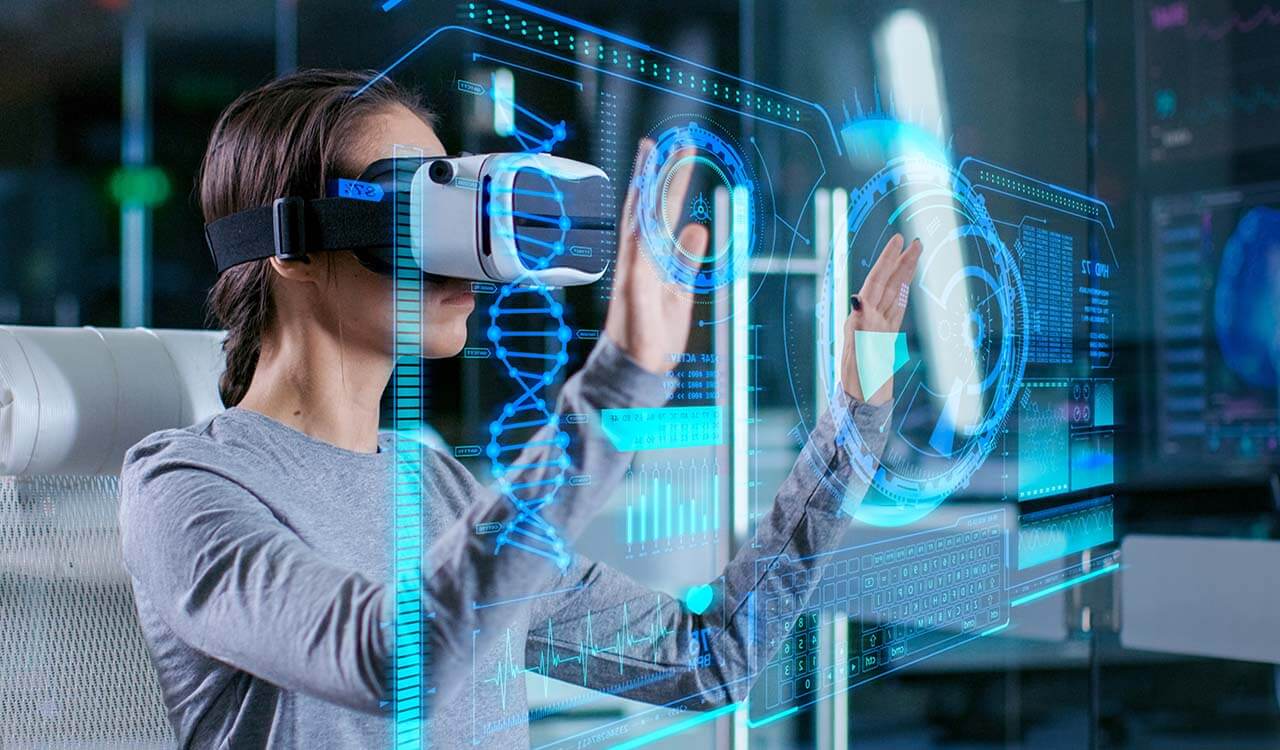1. Healthcare : The healthcare industry has been a big adopter of virtual reality technology. It helps their professionals train and prepare for real-world scenarios, including surgery. Teams can plan out complicated procedures. They can even diagnose and treat computer-generated patients.
VR is also being used to explore mental health treatment. It has been used to treat issues including alcohol addiction, claustrophobia, depression, and more. Because people can use headsets in their own homes, it can provide a safe and more cost effective option for many clients.
2. Space & Military : The International Space Station(ISS) Experience is an immersive VR series filmed over multiple months to document different crew activities, from science conducted aboard the station to a spacewalk. The series uses special 360 cameras designed to operate in space to transport audiences to low-Earth orbit and make viewers feel like astronauts on a mission.
The military in the UK and the US have both adopted the use of virtual reality in their training as it allows them to undertake a huge range of simulations. VR is used in all branches of service: the army, navy, air force, marines and coast guard. In a world where technology is adopted from an early age and children are accustomed to video games and computers, VR proves an effect method of training.
3. Education / Training : Virtual reality can improve education by providing students with memorable and immersive experiences that would otherwise not be possible. What’s more, it can all take place within the classroom.
VR is accessible to every student and can be easily monitored by teachers. Virtual experiences have the power to engage and inspire students in a unique and powerful way.
Given the growth of VR within education, and the positive response from schools, we wouldn’t be surprised if VR made it onto the curriculum at some point in the future. Curriculum aligned content and structured VR lesson plans have already been developed and are available in the UK.
4. Automotive : North America is the biggest shareholder of the global automotive VR market. While Tesla advertises its cars by offering customers virtual rides, Ford Motor Company develops a VR training tool for polishing the skills of its technicians. Germany continues to be the leading automotive VR adopter in Europe, with Volkswagen reducing design costs via virtual prototyping, BMW increasing sales thanks to immersive showrooms, and Audi enhancing the safety of self-driving cars manufacturing by performing testing in virtual reality.
The key drivers of the increasing automotive VR popularity are technological advancement and the need to reduce engineering costs.
Virtual reality technology can become a sales-boosting mechanism for car manufacturers and dealers. They have the opportunity to raise online sales via virtual showrooms, where potential customers will inspect 3D cars’ exterior and interior and have a test drive – all without leaving their homes.
5. Architecture : Using VR, architects can not only envision what they’re building but understand how it feels as well. This allows them to experience the space before it is built and make real-time changes to deliver customer satisfaction.
6. Sports : VR is revolutionising the sports industry for players, coaches and viewers. Virtual reality can be used by coaches and players to train more efficiently across a range of sports, as they are able to watch and experience certain situations repeatedly and can improve each time. Essentially, it’s used as a training aid to help measure athletic performance and analyse technique. Some say it can also be used to improve athletes' cognitive abilities when injured, as it allows them to experience gameplay scenarios virtually. Similarly, VR has also been used to enhance the viewer’s experience of a sporting event. Broadcasters are now streaming live games in virtual reality and preparing to one day sell virtual tickets to live games so that anyone from anywhere in the world can ‘attend’ any sports event. Potentially, this could also allow for those who cannot afford to spend money on attending live sports events to feel included as they can enjoy the same experience remotely, either for free or at a lesser cost.
7. Retail / Fashion : Online shopping is convenient, but it often means we must buy then try. But with VR, you can preview furniture in your own home or try out makeup on your own skin. This helps create a better experience for customers and minimize returns.
By taking VR to the next level, retailers can dive engagement with current and potential customers. They can gather information to market and tailor the shopping experience to each specific user. etc,.
